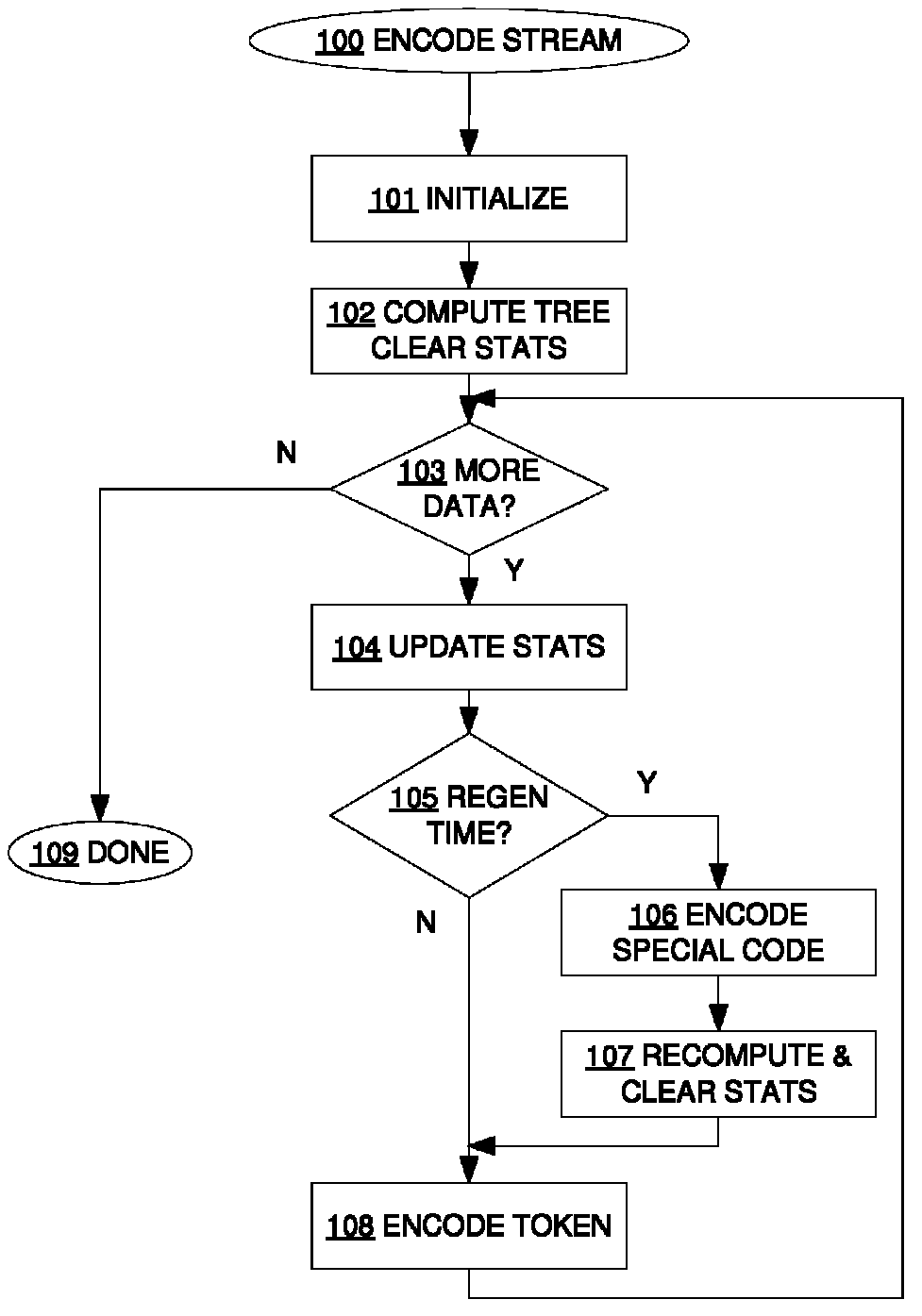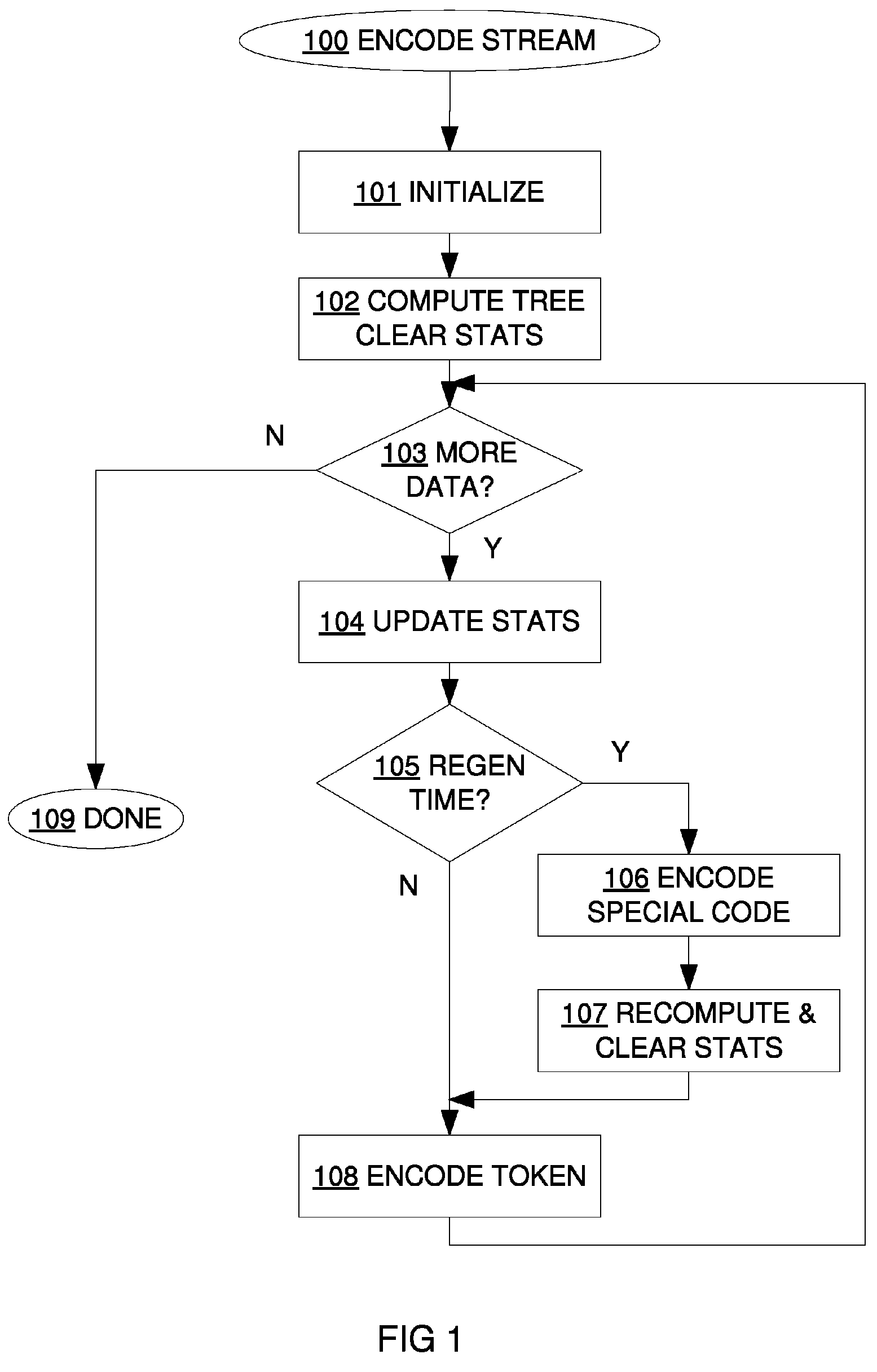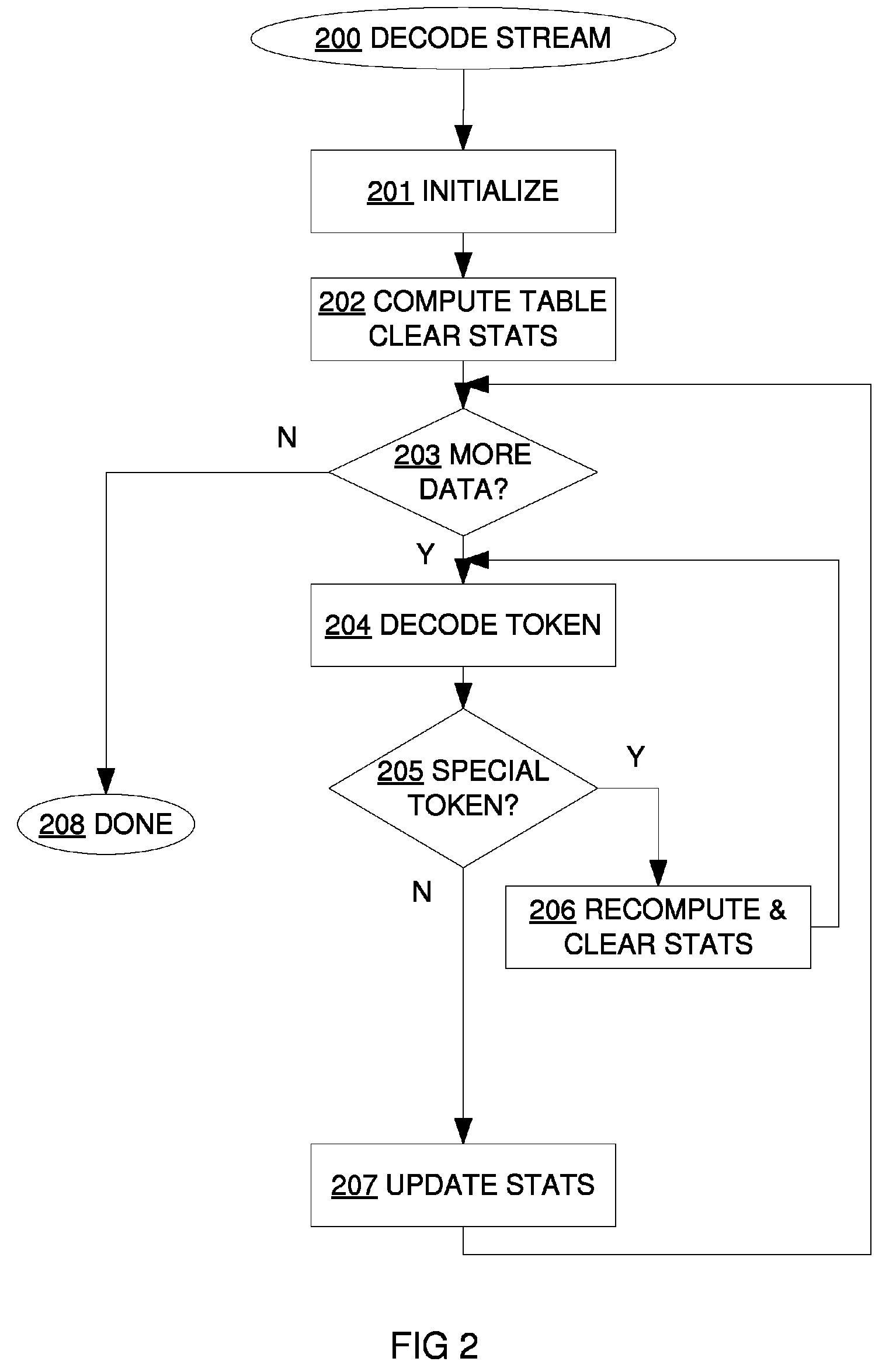Fast approximate dynamic Huffman coding with periodic regeneration and precomputing
a dynamic huffman coding and periodic regeneration technology, applied in the field of data compression, can solve the problems of different requirements, light poor compression ratio, and old methods are no longer suitable, and achieve the effect of fast compression and decompression and good compression
- Summary
- Abstract
- Description
- Claims
- Application Information
AI Technical Summary
Benefits of technology
Problems solved by technology
Method used
Image
Examples
Embodiment Construction
[0023]FIG. 1 illustrates the encoding process (100) on a general level. At (101), the state of the encoder is initialized (for example, data structures are allocated). Among other things, this initializes variables related to determining when to next regenerate the coding trees. In the preferred embodiment, regeneration shall occur fairly soon (e.g., after outputting 32 tokens).
[0024]At (102), the Huffman coding tree is computed. Any known method for computing the Huffman coding tree can be used (for example, one utilizing a priority queue). At this point, no statistics may be available, in which case all counts used in the calculation are zero. Alternatively, application dependent initial counts may be used (e.g., by reading such counts from a file, where the counts from a previous run have been saved). The token frequency statistics are cleared. If it is desired that the coding tree represents the entire history so far, then clearing the statistics can be omitted here and in (107)...
PUM
 Login to View More
Login to View More Abstract
Description
Claims
Application Information
 Login to View More
Login to View More - R&D
- Intellectual Property
- Life Sciences
- Materials
- Tech Scout
- Unparalleled Data Quality
- Higher Quality Content
- 60% Fewer Hallucinations
Browse by: Latest US Patents, China's latest patents, Technical Efficacy Thesaurus, Application Domain, Technology Topic, Popular Technical Reports.
© 2025 PatSnap. All rights reserved.Legal|Privacy policy|Modern Slavery Act Transparency Statement|Sitemap|About US| Contact US: help@patsnap.com



